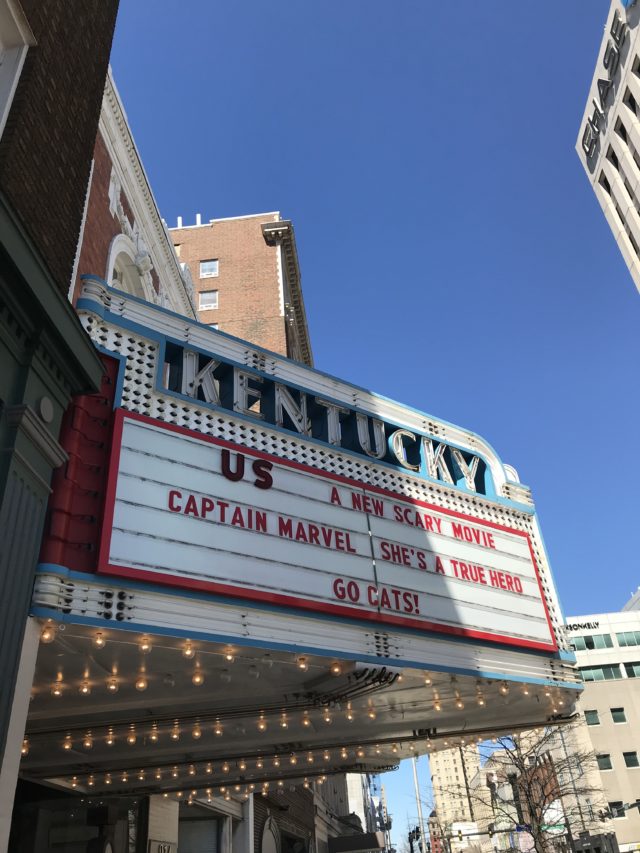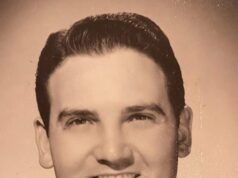This is ‘Us’
Jordan Peele movie ‘Us’ has Lexington art pioneer behind the scenes
by Rhonda Reeves
Though Lexington’s cityscape is now dotted with murals in every conceivable permutation, that wasn’t always the case. Kentucky native and artist Sammy Beam was an early pioneer back in the 80s — painting everything from the infamous Atomic Cafe mural, to a UK basketball player “on the front wall of Court Sports’ on Limestone, and elaborate trompe l’oeil environments for too many horse farms and iconic restaurants to count.
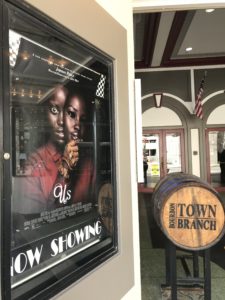

Embry’s led to his next opportunity. He says, “My first customer, after leaving Embry’s, was Genie Akin, by way of my friends and colleagues at Designers East. Carol Pippen, of Designers East (and still a delightful Kentucky designer), hooked me up with the Nine Point Mesa, and Mesa Grill and Cantina gigs for which I was a traveling painter for a few years. Gigs usually started with painted finishes, but, as customers got to know me and started listening to my ideas, I became free to focus much more on artwork. By the end of the first year of freelancing, it was about all that I was doing.”
Of his decision to leave Kentucky behind, he says, “I’d had friends who’d left Lexington for larger cities, and they were finding greater success there than back home. So I was encouraged to go west. Bigger pond. At the time, I had pretty much saturated the Lexington market. There were a couple of years when every bar or restaurant that opened had me do something for them. I was always grateful for the work, but it almost became embarrassing. There were times when I would suggest other artists, just to mix things up a little.”
“Still,” he adds, “it was always feast or famine in Lexington. It can be feast or famine in Los Angeles, too, but the feasts are usually lucrative enough to see me through the times of famine.”
Catching up with Beam these days means a few days of facebook messaging and emails between here and his current home in L.A., where he’s busy celebrating the release of the new Jordan Peele movie, US. Beam was the lead scenic painter on the film, and he’s responsible for the Santa Cruz boardwalk ‘fun house’ that’s central to the movie’s plot.
Now that he’s seen the movie, he can give an honest critique of the finished product, and says, “I was impressed with every frame of it. I thought that it was beautifully crafted, smart, and funny in all of the right places. I tend to pick things apart. I couldn’t.”
“Embry’s hired me as their full time Window Designer and Fashion Illustrator a couple of weeks before I graduated, and I moved to Lexington for the job. I still consider my five years there the most valuable educational experience of my life.”
—Sammy Beam
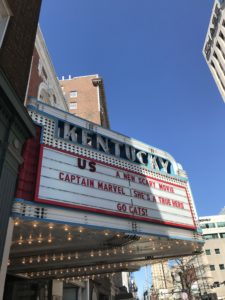

Back then, it took a lot less to make a statement than it does today. For instance, I made the papers when I painted a UK basketball player on the front wall of Court Sports, on Limestone. That wouldn’t get a hiccough, in press, today.
The doubt turned out to be unnecessary, as he explains, “I was heading to my truck, at the end of day seventeen, when I passed one of the director’s assistants and she said, ‘congratulations!’ I thanked her and asked why I deserved congratulations. ‘Haven’t you seen it? They’re filming on your set right now, and it’s absolutely gorgeous. Come with me.’ I got to watch a scene being filmed in the monitor room with the Production Designer and Art Director. They were elated and I was relieved. It looked like the forest from The Wizard of Oz.”
He told friends in advance of the movie’s release, “Forgive me if I’m too excited about this. It would not be as big a deal if I were a seasoned union painter who had worked in ‘the film industry’ for years, (as I was told, repeatedly, by my union assistants on this gig.) So I’ll say, here, as I said to them… This was a big deal to me, and I was honored and elated to be hunted down by the Art Director and the Production Designer because they were familiar with my work and wanted my ‘hand’ in their movie. I’ve known all along that it probably won’t happen again, so I enjoyed every minute of the work and I will enjoy any molecule of happiness that I get from it opening in theaters.”
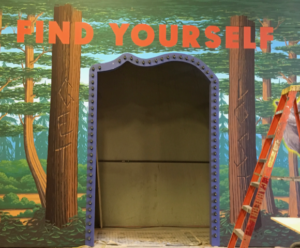

Lexington has changed considerably in the decades since Beam relocated to the west coast. He says, “I am blown away by all of the beautiful mural work and public art, that’s there, when I visit Lexington, these days. There were murals, here and there, when I was just starting out, but, nothing like what’s happening today. Looking back, (and I may be wrong, and forgive me if I am), it seems like Stephen Sawyer was the only one who was painting public spaces, (beautifully, I might add), until Pat Gerhard, Phil Willett, and I showed up on the scene. If I were to compare what I did, then, to what’s happening in Lexington, today, I could get really depressed, but I choose to relate instead of compare.”
He continues, “The scene was still relatively new and unexplored in my early days. We young artists were working with nominal budgets and trying to keep the lights on at home while we attempted to make worthy statements. Some of the gigs were paycheck gigs. Back then, it took a lot less to make a statement than it does today. For instance, I made the papers when I painted a UK basketball player on the front wall of Court Sports, on Limestone. That wouldn’t get a hiccough, in press, today.”
Asked to recall his most memorable Lexington projects, he recalls, “I once painted a nude woman on a ceiling, over Belle Brezing’s famous bed. I tried to approach it as an artistic piece, very 19th century French and tasteful. On the second day, I arrived to find that the customer had left a copy of Hustler magazine open, for me to see, with a note that said ‘make nipples pinkish tan!’ I realized, then, that what I was creating was porn.”
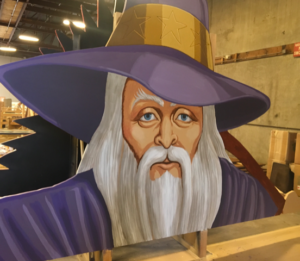

He admits to still getting homesick for Lexington from time to time, adding, “To this day, the majority of my dearest and closest friends are in Lexington. I miss the community. I miss the seasons. I miss the physical beauty of the city and countryside, surrounding it, and I miss the spaces where I lived.”
This article also appears on page 6 and 7 of the April 2019 print edition of Ace Weekly.
Subscribe to the Ace e-dition for Lexington news, arts, culture, food, and entertainment news delivered to your inbox.
Call today to advertise in Ace, 859.225.4889


